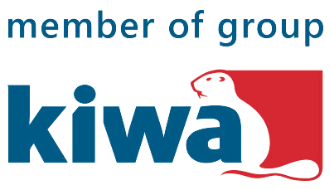1. Commitment
Securing the support and commitment from top management is fundamental for the successful implementation of your Quality Management System (QMS) and attainment of ISO 9001 certification. Top management plays a pivotal role in actively participating in crucial processes such as management review and demonstrating their commitment to the system through a customer-focused approach and a clear Quality Policy. Therefore, it’s imperative to obtain their commitment early in the certification journey. Leveraging their leadership and influence, particularly in medium to large organisations, is essential to facilitate the implementation of the QMS and ensure the availability of necessary resources. Failure to prioritise this initial step often leads to challenges in effectively implementing the QMS.
2. Understand Requirements
Ensure you understand all of your internal and external requirements and have considered these in the development of the QMS.
(a) Internal Requirements
When considering internal requirements, start by examining your organisation’s structure. Clearly defining the hierarchy, roles, and responsibilities within your organisation is essential for ensuring the efficient implementation and management of the QMS. Additionally, evaluate the impact of your organisation’s interactions with clients and suppliers on the QMS. Understanding these relationships can help enhance customer satisfaction and supplier performance. It’s also important to assess any pre-existing policies, procedures, and management systems, such as safety or environmental management systems, that may already be in place. This assessment will help identify areas for integration or alignment with the QMS. Finally, define the scope of your QMS. Clearly specifying which processes are included and potentially excluded from governance ensures clarity and effectiveness in its implementation.
(b) External Requirements
External requirements encompass a variety of factors. Compliance with the ISO 9001 is fundamental to meeting internationally recognised quality management principles and enhancing organisational performance. Additionally, it’s crucial to adhere to relevant laws and regulations governing your industry. By doing so, you can mitigate risks and maintain legal compliance. Consider industry-specific standards or guidelines applicable to your organisation to meet sector-specific quality and safety standards. Lastly, incorporate specific requirements imposed by clients or government agencies. This ensures that your organisation fulfills contractual obligations and regulatory mandates effectively.
3. Implement the System
There is no golden rule on how to implement the system and every organisation’s requirements and circumstances will vary. But we have some key principles that may help you.
(a) Engage people
The system can’t be implemented effectively in isolation from key people that will be need to be involved in the system. Help people understand what will be required of them and what impacts the system will have on the way they do things moving forward. Take their feedback on board and incorporate it into the system. This is a change management project and bringing people along with you is a key to your QMS’s success.
(b) Leadership
Utilise top management to help influence outcomes and set objectives. They have committed to the process so get them actively involved. You will also need a Project Manager / Consultant / Management Representative, basically a single person responsible for overseeing the project through to completion – it’s not to say they may not have other duties as well and if you are reading you’re likely going to be tat person.
(c) Fit for purpose
the system needs to be fit for purpose for your organisation. Even if you start with a readymade template or a software application, you need to adapt this so that it is specific to your business. You will not be able to achieve excellence with a generic system.
(d) Monitor
Check your progress along the way, set milestones and ensure their completion. Don’t wait until you think your system is bullet proof and gold plated before you have it assessed. You will need to conduct internal audits so think about when these should be done and what aspects of the system are audited. Bring in your external auditors when you think you are 50-70% of the way there and have them provide input as to where your system has gaps or non-conformances.
4. Certification
As per 3(d) don’t wait until you believe your system is bullet proof or gold plated before engaging Compass Assurance Services to certify your system. You may be disappointed to find there are still gaps or you have spent an enormous amount of resources on an aspect of the system that wasn’t required! An audit duration is calculated using processes based upon the IAF Mandatory Document 5 requirements and a consideration of your unique circumstances and business structure. The QMS process requires a stage 1 and stage 2 audit. Your auditor is selected based upon their experience within your industry, the standard and auditing and leading teams. All of our auditors are selected based upon their skills, experience and ability to communicate effectively at all levels of an organisation. We always aim to provide you with a local auditor to help mitigate costs associated with any travel and accommodation. Your auditor will work with you to set an audit program that is suitable to your business, the scope of your system and meets all external requirements.
(a) Stage 1 Audit
Our philosophy is that it is often more useful to have the auditor start engaging with your system when you believe you have 50-70% of the system in place. This is often the best time to conduct the stage 1 audit or a preliminary gap audit. The audit generally focuses on Head Office and the key system aspects including reviewing your documentation (such as your Quality Manual, Quality Policy and other procedures) against the mandatory requirements of the Standard. Findings such as non-conformances, areas of concern and opportunities for improvement will provide valuable input into the development and implementation of the system. All findings will be communicated to you through a closing meeting and the audit report.
(b) Stage 2 Audit
This audit is where the magic happens. This is the certification audit and the outcome is a recommendation by the Lead Auditor to Compass Assurance Services on whether certification should be granted or whether there is still some work required. This audit may be a day after the Stage 1 audit or up to 6 months after the Stage 1 audit, however most stage 2 audits occur 4-6 weeks after the initial audit. The duration between audits is really based upon the time required for you to adequately deal with any gaps or non-conformances identified at the first audit and the ability to schedule your required stakeholder to be available. Unlike the stage 1 audit, implementation of the system is a key aspect of this audit. Our auditor will need to gather evidence of the system being used and implemented. This will involve engaging with workers at your various locations and in various roles associated with the system and the product realisation process.
5. Certification Decision
If there are no non-conformances identified by the Lead Auditor at stage 2 audit then they will make a recommendation to a Compass Assurance Services Certification Manager that certification be granted. If there are some non-conformances still in place after the stage 2 audit then additional evidence will need to be supplied after the audit. This is often done by a review of additional evidence off-site by the auditor but under some circumstances an additional audit or time on-site may be required. The Certification Manager will review the recommendation of the Lead Auditor as well as the supporting material such as audit reports, audit programs, any action plans and make the certification decision. The Certification Manager may revert to the Lead Auditor or you for additional clarification or information regarding some findings or they may simply agree with the Lead Auditors recommendation and issue your certificate.
6. Post Certification
You will receive your certificate and have access to both our certification mark and the JAS-ANZ accreditation symbol to include on appropriate company material. It’s a good idea to demonstrate to your clients, workers and stakeholders that you operate a business with a certified QMS. You’ve done all the hard work so why not make sure you realise the full value in the investment you have made in your system. It is a good idea to check our Certification Mark Policy or discuss with us how the certification marks or accreditation symbols may or may not be used. Your certificate is valid for 3 years, however this doesn’t mean that we won’t be seeing you for 3 years! Your auditor will have already worked with you on a 3 year plan which will specify the frequency of surveillance audits (typically annually or every 6 months) that will be required in order for your certificate to remain valid. Surveillance audits include a sample of key processes and sites to ensure the system remains compliant with ISO 9001 and that certification of the system remains appropriate.





